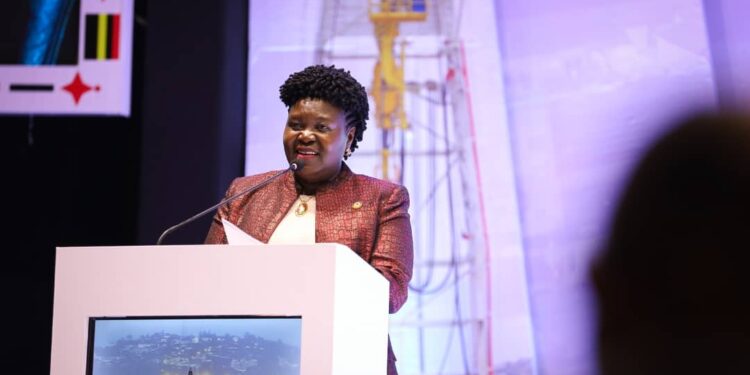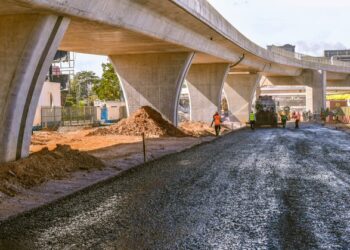In an electrifying turn of events, Uganda stands on the precipice of announcing the triumphant victor in the high-stakes race for control of the proposed 60,000 barrel per day (bpd) Hoima oil refinery in November this year.
Energy Minister Ruth Nankabirwa, a beacon of authority, disclosed this momentous revelation on October 17th, sending shockwaves through the industry.
The fervent anticipation stems from the dramatic exit of the Albertine Graben Refinery Consortium (AGRC) in June, a consortium boasting heavyweights like General Electric (US), Yaatra Ventures LLC (US), Intracontinent Asset Holdings Limited (Mauritius), and Saipem SPA (Italy).
Their untimely demise was a direct result of a harrowing struggle to secure the financial fortifications necessary for the final investment decision (FID).
Nankabirwa, a maestro of strategic vision, unveiled the refinery’s audacious ambition: to absorb a staggering 60,000 barrels of crude oil daily. With bated breath, the world watches, for by 2025, she envisions one champion from the four contenders, a victor poised to expedite the refinery’s genesis.
Ali Ssekatawa, the legal luminary and custodian of corporate affairs at the Petroleum Authority of Uganda, echoed the chorus of enthusiasm back in August. He sang the praises of an insatiable appetite and keen interest in nurturing the Hoima refinery.
The resonant refrain included the resounding presence of the Algerian titan, Sonatrach, poised to wield its prowess in tandem with Uganda National Oil Company.
A glimmer of hope persists, as AGRC’s valiant efforts have not been in vain. They have forged ahead, meticulously etching the blueprints through front-end engineering and design.
The land, a canvas of promise, has been acquired and cleared, ready to cradle the refinery and its vital arteries of pipelines.
The epicenter of this grand endeavor is slated for Kabaale, Buseruka Sub-County in Hoima District. An ambitious blueprint unfurls, encompassing a sprawling 211km-long multi-products pipeline.
This sinuous lifeline shall ferry refined elixirs to their sanctuary at Namwabula, Mpigi District. A symphony of components, including the Mbegu Water Intake and its aquatic conduit, and a storage haven, await their pivotal roles.
The design, a magnum opus, is christened the Residue Fluid Catalytic Cracker (RFCC). It is ordained to transmute Uganda’s crude into a cornucopia of treasures – liquefied petroleum gas (LPG), jet fuel, premium and regular gasoline, diesel, and low-sulfur fuel oil.
Environmental guardians, armed with Environmental and Social Impact Assessment (ESIA) studies, stand ready for their moment of reckoning. The National Environment Management Authority’s nod is the final imprimatur.
Compensations and relocations of those affected have been tenderly attended to. Front-End Engineering Designs (FEED) stand as testaments to meticulous preparation, yet the hallowed FID date of June 2023 has slipped through time’s grasp.
This setback marks the second faltering step for the Hoima project. In February 2015, a consortium led by Russian GT Global Resources LLC and South Korea’s SK Engineering & Construction Co. held the mantle, only to stumble on the precipice of a project framework agreement (PFA). AGRC emerged as the phoenix, poised to reignite the refinery’s flames.
In a symphony of silence, the latest PFA between the government and AGRC met an untimely demise on June 30, its demise shrouded in enigmatic quietude.
Five years of fervent negotiations yielded naught, despite President Yoweri Museveni’s entreaties and enticements.
Yet, amidst this whirlwind of fervor, a shadow of concern looms over the East African Crude Oil Pipeline (EACOP). Nankabirwa’s voice reverberates with urgency, imploring the ponderous Chinese titan, Sinosure, to quicken its stride.
A $3 billion symphony awaits, but time’s inexorable march threatens to amplify the cost of this grand opus.
Do you have a story in your community or an opinion to share with us: Email us at editorial@watchdoguganda.com













